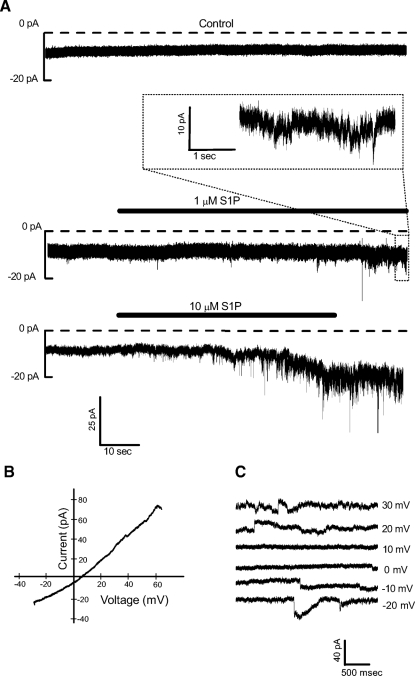Fig. 1.
Sphingosine-1-phosphate (S1P) elicits a cation current. A, top: a representative amacrine cell is voltage-clamped in the perforated-patch configuration at −70 mV and a control record is obtained. Middle: S1P (1 μM) is applied and a small inward current is elicited. A region of the activated current is shown on an expanded time scale (inset). Bottom: in a recording from another amacrine cell, 10 μM S1P is applied, and after ∼10 s, a noisy inward current begins to develop. B: a voltage ramp is delivered and an S1P-dependent current (leak-subtracted) is measured that reverses at +8 mV, suggesting that the current is carried by a mixture of cations. S1P-dependent currents were also recorded during a series of voltage steps (−70 to +40 mV). Currents recorded in a representative cell from 6 of those steps are shown in C. Outward currents were not observed unless the voltage was stepped positive to 10 mV (n = 4). Currents have been offset vertically for clarity.

